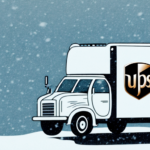The e-commerce landscape is evolving rapidly, and with it, the complexities of peak shipping seasons. As we approach UPS peak season 2024, it's evident that this year will be transformative for online retailers and their shipping strategies. The upcoming changes aren't merely incremental – they represent a paradigm shift in holiday shipping planning.
When Does UPS Peak Season 2024 Start?
UPS peak season for 2024 introduces a tiered approach that demands vigilance from shippers:
- September 29 - November 23, 2024: Initial surcharges begin
- November 24 - December 28, 2024: Peak "peak season" with highest surcharges
- December 29, 2024 - January 18, 2025: Gradual reduction in surcharges
This extended timeline signals a seismic shift in the shipping landscape, requiring a complete overhaul of holiday shipping strategies. Success will hinge on adaptability and the ability to turn these challenges into competitive advantages.
What's New in 2024?
The most significant change for 2024 is the introduction of flat-rate surcharges on all Air, Ground Residential, and SurePost packages, regardless of shipping volume. This new layer of charges comes in addition to the volume-based surcharges that have become standard in recent years.
This change is nothing short of a game-changer, impacting everyone from small Etsy shops to large retailers. It levels the playing field in some ways, but also introduces new complexities that shippers must navigate.
Perhaps most notably, 2024 brings the introduction of tiered pricing throughout the peak season. This means costs can fluctuate dramatically from week to week, requiring shippers to be especially vigilant about their timing. It's no longer enough to have a static peak season strategy – businesses need to be prepared to adapt their approach as the season progresses.

Breaking Down the Surcharges
A Demand Surcharge will apply to all UPS Air, UPS Ground Residential, and UPS SurePost packages:
For high-volume shippers (those sending over 20,000 packages per week), UPS will apply extra fees based on how much your shipping exceeds your usual weekly average. These fees apply to UPS Air Residential, Ground Residential, and SurePost packages.
Here's how it works:
- UPS calculates your average weekly shipping volume (your "baseline").
- If you ship more than 105% of your baseline in a week, you'll pay extra fees.
- The more you exceed your baseline, the higher the fees.
- These fees apply to all packages above your baseline, not just the extra ones.
This system encourages consistent shipping volumes and may significantly impact costs for businesses with fluctuating shipping needs, especially during peak seasons.
These rates represent substantial increases, with some surcharges nearly doubling. However, the real impact extends beyond these headline figures. The true cost will depend on how these surcharges interact with your specific shipping profile.
The Hidden Impact on Your Business
To put this into perspective, consider a business shipping 1,000 packages a day during peak season. A $0.50 surcharge on each package adds up to $500 daily in additional costs. Over a month, that's $15,000 directly impacting the bottom line. But this is just the beginning of the story.
These surcharges can trigger a domino effect throughout your entire business model. You might be forced to raise prices, potentially affecting customer loyalty and sales volume. Alternatively, absorbing these costs could impact your ability to invest in other critical areas of your business, from marketing to inventory.
Moreover, these surcharges don't exist in isolation. They interact with your existing shipping rates, discounts, and the dimensional weight of your packages. The real cost can often be much higher than the sticker price suggests.
Expert Strategies for E-commerce Logistics Leaders
In the face of these challenges, adopting a proactive, data-driven approach is crucial. Here are some strategies that can help turn these challenges into opportunities:
- Leverage Advanced Analytics: Implement predictive modeling to forecast surcharge impacts on your specific product mix and shipping patterns. Use machine learning algorithms to optimize shipping choices in real-time based on surcharge tiers and your business rules.
- Diversify Carrier Strategy: Don't rely solely on UPS. Develop relationships with regional carriers and explore options like LaserShip, OnTrac, or DHL eCommerce for certain regions. Consider using USPS for lighter packages and UPS for heavier ones to optimize costs.
- Rethink Fulfillment Network: Analyze your order data to identify optimal locations for additional fulfillment centers. Consider using a distributed inventory model to reduce shipping distances and associated costs.
- Implement Dynamic Pricing: Develop sophisticated pricing algorithms that factor in real-time shipping costs, including surcharges. This allows you to maintain margins without sacrificing sales volume.
- Optimize Packaging: Invest in packaging engineering to reduce dimensional weight. Even minor reductions can lead to significant savings when multiplied across thousands of shipments.
- Leverage Zone Skipping: For high-volume lanes, consider consolidating packages and using zone skipping to bypass sorting facilities and reduce costs.
- Implement a Returns Strategy: Design a returns process that consolidates shipments and leverages off-peak timing to minimize costs. Consider partnering with retail locations for in-person returns to reduce shipping costs.
- Negotiate Strategically: Use data to your advantage in carrier negotiations. Present detailed analysis of your shipping patterns, volumes, and the impact of surcharges on your business to negotiate better rates or customized solutions.
- Educate Customers: Develop a communication strategy to inform customers about shipping options and costs. Consider offering incentives for choosing slower shipping methods during peak periods.
- Invest in Technology: Implement advanced shipping software that can automatically select the most cost-effective shipping method based on real-time surcharge data and your business rules.
Tangible Takeaways for Immediate Action
- Conduct a Surcharge Impact Analysis: Use the provided surcharge tables to model the impact on your specific product mix and shipping patterns. Identify which products or customer segments are most affected.
- Develop a Tiered Strategy: Create different shipping strategies for each surcharge period. For example, you might push more aggressive promotions for early holiday shopping during lower surcharge periods.
- Optimize Your Tech Stack: Evaluate your current shipping and fulfillment software. Ensure it can handle complex rate calculations and make real-time decisions based on surcharge tiers.
- Start Carrier Negotiations Now: Don't wait until peak season to negotiate with carriers. Start discussions now, armed with data about your shipping profile and projected volumes.
- Plan a Packaging Audit: Schedule a comprehensive packaging audit to identify opportunities for dimensional weight reduction and avoiding additional handling surcharges.
- Develop Customer Communication Plan: Create a strategy to communicate shipping costs and options transparently to customers. Consider how you'll explain potential delays or higher costs during peak periods.
- Analyze Historical Data: Deep dive into your shipping data from previous peak seasons. Identify patterns in volume, product mix, and customer behavior that can inform your 2024 strategy.
Looking Beyond Peak Season
While the focus is on navigating the immediate challenges of peak season, these strategies can lead to year-round improvements in shipping efficiency and cost reduction. Consider how the insights gained during this period can inform long-term decisions about product offerings, fulfillment strategies, and technology investments.
Consider these longer-term strategies:
- Reassess Your Product Line: Analyze the shipping economics of your products. Some may no longer be profitable when factoring in increased shipping costs.
- Invest in Technology: The right shipping software can provide real-time rate shopping, automate carrier selection, and provide valuable analytics.
- Build Strong Carrier Relationships: Don't just interact with carriers during rate negotiations. Year-round relationships can lead to better service, more flexibility during peak times, and even custom solutions.
- Educate Your Customers: Be transparent about shipping costs. Offering a range of shipping options and clearly explaining the trade-offs can lead to more satisfied customers and lower shipping costs.
—
UPS peak season 2024 presents unprecedented challenges for e-commerce logistics leaders. However, with a data-driven approach, strategic planning, and a willingness to innovate, it's possible to not only mitigate the impact of surcharges but to gain a competitive edge in the process. The key is to start preparing now, leveraging every tool and insight at your disposal to turn these shipping challenges into opportunities for growth and optimization.
Want help understanding how to save money this peak season? Reach out to us today.




















